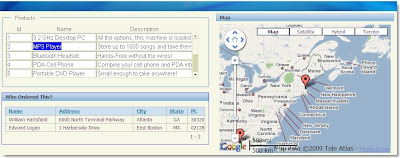On his blog, Grant started a discussion about the reasons - and especially managing the expectations - of converting Forms to APEX. The interesting thing is that also Joel Kallman (from the APEX Development team) joined the conversation, therefore making it a sort of Oracle internal discussion platform...
That you can use both technologies together proves this picture (the region on the upper left is an Oracle Form). I will present at ODTUG on the "how-to's".... (another shameless plug).
That you can use both technologies together proves this picture (the region on the upper left is an Oracle Form). I will present at ODTUG on the "how-to's".... (another shameless plug).

Comments
Three shameless plugs and your session is out :)
David
Then I'll leave the plugging of my session to you ;-).
Cheers
Roel
Thanks for the pointer to the Forms/Apex discussion. I wouldn't have seen it otherwise.
I really appreciated that David called out Grant's #15 about Apex cost being FUD, as I think most people would assume he was talking about the license cost.
The upper left region is Forms, the lower left region and the Google Maps is 100% APEX.
Roel